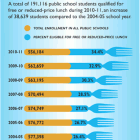I-Team In-Depth
OSHA Penalties Drop Nearly 50 Percent In Five Years
|
Penalties levied against Connecticut companies for violations of occupational safety rules dropped by more than half between 2011 and 2015, and the number of cases with penalties fell by 40 percent in the same time period, according to a C-HIT analysis of federal Occupational Safety & Health Administration (OSHA) data. Data from the agency’s offices in Bridgeport and Hartford show initial penalties against Connecticut employers totaled $10.86 million in 2011 and dropped to $5.07 million in 2015. Companies were able to negotiate settlements, lowering penalty payments to $6.26 million in 2011, and $3.51 million in 2015. For the first nine months of 2016, the downward trends in cases and fines are continuing, the data show. Reasons for the declines vary: Government officials point to safer workplaces and more compliance with regulations.



